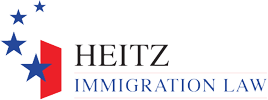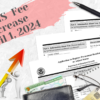With the high cost of government filing fees for immigration applications, you may be wondering if there is any way to avoid this expense. Turns out there is, but it’s not an easy thing to qualify for. You certainly won’t get anything for free unless you can provide the appropriate documentation showing how you can’t afford to pay for the application fees. Here is everything you need to know on how to qualify for the filing fee waiver and how to get it approved.
Not all immigration forms qualify for a waiver of the filing fees.
Here is a list of all the applications that qualify for the I-912 Fee Waiver application. If your application is not on this list, you are out of luck.
- I-90 Renewal or Replacement of Green Card
- I-131 Travel Document Application
- I-192 Advance Permission to Enter as Nonimmigrant
- I-1290B Appeal/Motion
- I-539 Change of Status
- I-751 Removal of the Conditions of Residence
- I-765 Employment Authorization
- I-817 Family Unity Benefits
- N-300 Declaration of Intention to Become a US Citizen
- N-336 Naturalization Hearing Request
- N-400 Naturalization Application
- N-470 Preserve Residence for Naturalization
- N-565 Replacement Naturalization Certificate
- N-600 Certificate of Citizenship
- Biometrics (fingerprint) fee in connection with any application or petition, regardless of whether it is listed above, except if filing form I-765 for DACA.
There may be some USCIS forms that don’t require any filing fee at all, or there may be some forms that have a fee exemption for certain types of applicants. Look for the instructions on the USCIS form you are completing to find out if there are any fee exemptions. Otherwise, if the form is on this list, you can submit Fee Waiver form I-912 along with your application or petition.
How do I know if I qualify for a fee waiver?
There are three ways that you can qualify to get an exemption for the filing fees of any of the forms listed above. You only need to qualify for ONE of these (but you may have more than one that pertains to your situation).
1. You are receiving a “means-tested” government benefit.
This type of a benefit is based on your means, or in other words, it’s based on whether your income and expenses allow you to qualify for the particular benefit. Examples of this would be Medicaid, Food Stamps (SNAP, TANF), Supplemental Security Income (SSI), or any other benefit based on your means, whether it is a state or federal benefit. Note that Social Security Disability Insurance (SSDI) is NOT a means-tested benefit because it is based on being disabled, unlike SSI which is based on your ability to pay.
2. Your household income is at or below 150% of the federal poverty guideline.
This calculation will depend on your household size and income. For example, if you have 4 people in your household (only include yourself, your spouse if you have one, and your dependents unless another person living with you provides more than 50% of your support), and your total income for all household members combined is $36,375 or less, then you are considered to be at 150% of the poverty guideline. Click here to download the I-912P chart to calculate if you qualify based on income.
3. You have experienced significant financial hardship.
This would be the last resort if you can’t qualify for numbers one or two. It will be the hardest way to qualify because USCIS will scrutinize your request and you will need a lot of documentation to prove it. An example of financial hardship could be recent unemployment, high medical expenses, or some other large unexpected expenses.
Evidence in the form of documentation will be required.
If you qualify for the fee waiver because you meet at least one of the requirements listed above, then you will need to submit the following:
- An official document (or letter) from the agency that grants you the means-tested benefit.
- A copy of your most recent federal tax return if you are qualifying under the 150% poverty guideline.
- If you are qualifying under financial hardship, you will need to provide documented evidence of the hardship as well as prove your income (with a copy of your tax return) and evidence of your assets, liabilities and expenses.
Send the I-912 application together with the application you are filing with USCIS.
The I-912 fee waiver form must be sent in the same envelope or package as the form which you are asking to be exempted from payment of the filing fee. But if you are filing a number of applications at the same time (like for an adjustment of status package) then you only need to send one I-912 fee waiver form.
Keep in mind that if your fee waiver request is denied, your entire package will be returned to you because it will not be accepted at USCIS without the filing fee. You will then have to re-submit the application again with the appropriate fees. If your application needs are urgent, you may not want to risk the delay of a possible rejection, even if you feel you do qualify.
A well put together fee waiver request with the appropriate supporting documentation is something that your immigration attorney can do for you. Your lawyer will give you guidance on whether you have a good chance of qualifying for a fee waiver, or whether you should not risk the delay if your request is denied. As long as you can support your request with evidence and you have the time to wait, a fee waiver can save you some money.









